Jeep Avenger vs Renault Mégane – Performance, range & efficiency compared
Two cars, one duel: Jeep Avenger meets Renault Mégane.
Which one wins in performance, efficiency and value for money? Find out now!
Costs and Efficiency:
Price and efficiency are key factors when choosing a car – and this is often where the real differences emerge.
Jeep Avenger has a decisively advantage in terms of price – it starts at 21900 £, while the Renault Mégane costs 35100 £. That’s a price difference of around 13115 £.
In terms of energy consumption, the advantage goes to the Renault Mégane: with 15.40 kWh per 100 km, it’s slight more efficient than the Jeep Avenger with 15.50 kWh. That’s a difference of about 0.10 kWh.
As for range, the Renault Mégane performs slightly better – achieving up to 452 km, about 52 km more than the Jeep Avenger.
Engine and Performance:
Power, torque and acceleration say a lot about how a car feels on the road. This is where you see which model delivers more driving dynamics.
When it comes to engine power, the Renault Mégane has a distinct edge – offering 218 HP compared to 156 HP. That’s roughly 62 HP more horsepower.
In acceleration from 0 to 100 km/h, the Renault Mégane is clearly perceptible quicker – completing the sprint in 7.40 s, while the Jeep Avenger takes 9 s. That’s about 1.60 s faster.
In terms of top speed, the Jeep Avenger performs slightly better – reaching 194 km/h, while the Renault Mégane tops out at 160 km/h. The difference is around 34 km/h.
There’s also a difference in torque: Renault Mégane pulls somewhat stronger with 300 Nm compared to 260 Nm. That’s about 40 Nm difference.
Space and Everyday Use:
Whether family car or daily driver – which one offers more room, flexibility and comfort?
Both vehicles offer seating for 5 people.
In curb weight, Jeep Avenger is significantly lighter – 1180 kg compared to 1719 kg. The difference is around 539 kg.
In terms of boot space, the Renault Mégane offers minimal more room – 389 L compared to 380 L. That’s a difference of about 9 L.
In maximum load capacity, the Renault Mégane performs slight better – up to 1332 L, which is about 55 L more than the Jeep Avenger.
When it comes to payload, Jeep Avenger to a small extent takes the win – 502 kg compared to 446 kg. That’s a difference of about 56 kg.
Who comes out on top?
Overall, the Jeep Avenger shows itself to be shows small but notable strengths and secures the title of DriveDuel Champion.
It convinces with the more balanced overall package and proves to be the more versatile choice for everyday use.
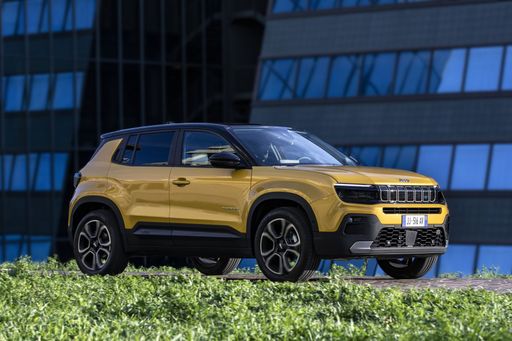 @ Jeep / Stellantis Media
@ Jeep / Stellantis Media
Jeep Avenger
Jeep Avenger
The Jeep Avenger shrinks Jeep's boxy, adventurous styling into a city-friendly electric crossover that looks just as at home on tight streets as it does on muddy weekend lanes. It's a savvy pick for drivers who want go-anywhere attitude without the truck-size ego — practical inside, lively around town and ready to tackle a bit of rough stuff when the mood strikes.
details @ Jeep / Stellantis Media
@ Jeep / Stellantis Media
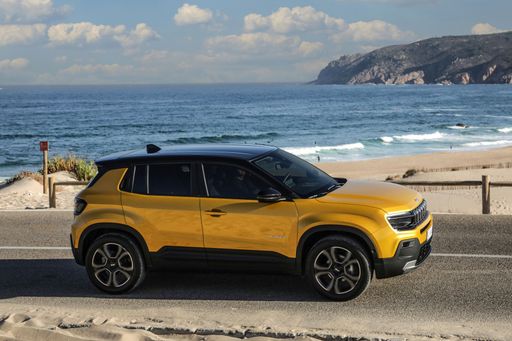 @ Jeep / Stellantis Media
@ Jeep / Stellantis Media
 @ Jeep / Stellantis Media
@ Jeep / Stellantis Media
 @ Jeep / Stellantis Media
@ Jeep / Stellantis Media
 @ Jeep / Stellantis Media
@ Jeep / Stellantis Media
Renault Mégane
The Renault Mégane blends Gallic flair with practical everyday charm, showing that sensible transport can still have personality and poise. It’s a smart pick for buyers who want a comfortable, stylish hatchback that feels a little more special than the usual commute companion.
details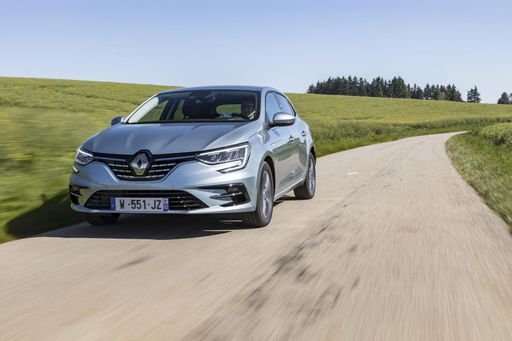 @ Renault Group Media
@ Renault Group Media
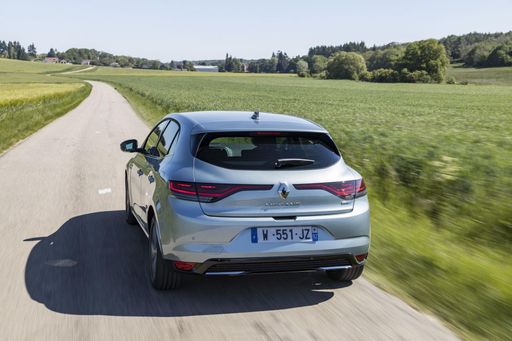 @ Renault Group Media
@ Renault Group Media
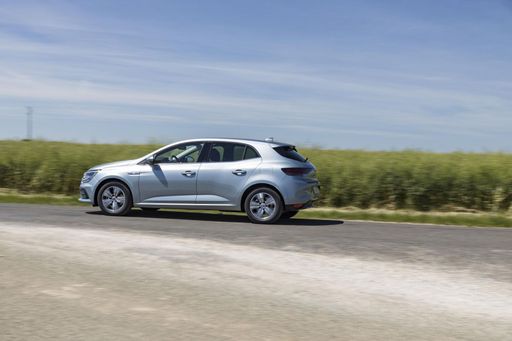 @ Renault Group Media
@ Renault Group Media
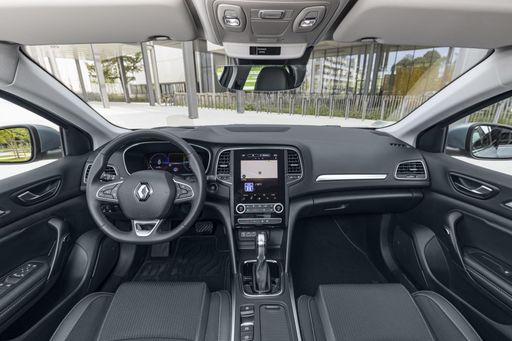 @ Renault Group Media
@ Renault Group Media
 @ Renault Group Media
@ Renault Group Media
 @ Jeep / Stellantis Media
@ Jeep / Stellantis Media
|
 @ Renault Group Media
@ Renault Group Media
|
|
|
|
Costs and Consumption |
|
|---|---|
|
Price
21900 - 36900 £
|
Price
35100 - 38500 £
|
|
Consumption L/100km
4.9 - 5.7 L
|
Consumption L/100km
-
|
|
Consumption kWh/100km
15.50 kWh
|
Consumption kWh/100km
15.40 kWh
|
|
Electric Range
400 km
|
Electric Range
452 km
|
|
Battery Capacity
51 kWh
|
Battery Capacity
-
|
|
co2
0 - 129 g/km
|
co2
0 g/km
|
|
Fuel tank capacity
44 L
|
Fuel tank capacity
-
|
Dimensions and Body |
|
|---|---|
|
Body Type
SUV
|
Body Type
SUV
|
|
Seats
5
|
Seats
5
|
|
Doors
5
|
Doors
5
|
|
Curb weight
1180 - 1520 kg
|
Curb weight
1719 kg
|
|
Trunk capacity
325 - 380 L
|
Trunk capacity
389 L
|
|
Length
4084 - 4088 mm
|
Length
4200 mm
|
|
Width
1776 mm
|
Width
1783 mm
|
|
Height
1527 - 1541 mm
|
Height
1505 mm
|
|
Max trunk capacity
1218 - 1277 L
|
Max trunk capacity
1332 L
|
|
Payload
494 - 502 kg
|
Payload
446 kg
|
Engine and Performance |
|
|---|---|
|
Engine Type
Electric, Petrol, Petrol MHEV
|
Engine Type
Electric
|
|
Transmission
Automatic, Manuel
|
Transmission
Automatic
|
|
Transmission Detail
Reduction Gearbox, Manual Gearbox, Dual-Clutch Automatic
|
Transmission Detail
Reduction Gearbox
|
|
Drive Type
Front-Wheel Drive, All-Wheel Drive
|
Drive Type
Front-Wheel Drive
|
|
Power HP
100 - 156 HP
|
Power HP
218 HP
|
|
Acceleration 0-100km/h
9 - 10.6 s
|
Acceleration 0-100km/h
7.40 s
|
|
Max Speed
150 - 194 km/h
|
Max Speed
160 km/h
|
|
Torque
205 - 260 Nm
|
Torque
300 Nm
|
|
Number of Cylinders
3
|
Number of Cylinders
-
|
|
Power kW
74 - 115 kW
|
Power kW
160 kW
|
|
Engine capacity
1199 cm3
|
Engine capacity
-
|
General |
|
|---|---|
|
Model Year
2023 - 2025
|
Model Year
2025
|
|
CO2 Efficiency Class
A, D, C
|
CO2 Efficiency Class
A
|
|
Brand
Jeep
|
Brand
Renault
|
What drivetrain options does the Jeep Avenger have?
Available configurations include Front-Wheel Drive or All-Wheel Drive.
The prices and data displayed are estimates based on German list prices and may vary by country. This information is not legally binding.
